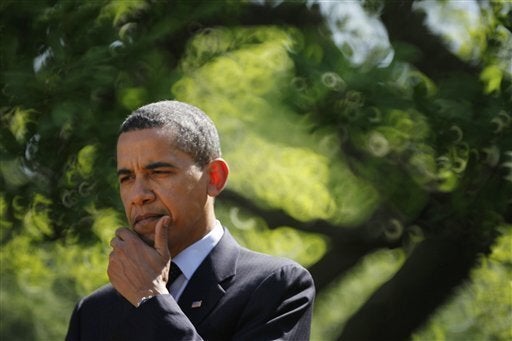
Gone are GM's rhetoric echoing in the Oval Office, Exxon's denial of science, and Dick Cheney's years of inaction. When it comes to fighting global warming, President Obama has swept them all away in his first 100 days in office.
He has put a new and proper reliance on science. He has named dedicated environmentalists to key positions within the White House, at the Environmental Protection Agency and at the Energy Department. And he has unveiled substantial measures to directly tackle climate change.
Perhaps nothing the president has done so far will on its own reduce heat-trapping carbon dioxide, the key greenhouse gas. It's only been 100 days. But he has charted a new course.
President Bush refused to let California set its own auto emissions standards. Obama instructed the Environmental Protection Agency to review Bush's decision. The agency is nearly certain to grant California, 12 other states and the District of Columbia a waiver in June that will let them slash emissions 30% by 2016.
The result will be the biggest single step the United States has taken to cut global warming pollution.
Two years ago, the Supreme Court said that if the federal government found that global warming was a threat to public health, it had the responsibility to regulate greenhouse gas emissions.
The Bush administration took no action. By mid-April, the Obama-led EPA declared that global warming was indeed just such a danger. This will let the federal government use the Clean Air Act to cut greenhouse gas emissions--a potentially huge step. First on the agenda: Setting national tailpipe standards--in effect applying the stricter level favored by California and the 13 others to all 50 states.
Reflecting the changed course, Obama has used his economic stimulus and budget package to underscore the important role that clean development must play as the nation struggles to right its economy.
He is knitting together the environment and the economy by recognizing that one way to rebuild is to promote green jobs. With a revitalized auto industry selling efficient cars, you also get jobs for assembly line workers. Build energy-efficient offices and homes, wind-turbines and solar power plants, and you get good 21st century construction jobs.
A likely result: Central elements in the American economy that had been at war for decades may just find a common purpose--and an opportunity to profit by working together.
The public is beginning to take note.
A Marist College poll, conducted April 21-23, found overwhelming support for the decision that EPA increase tailpipe standards. Of the 975 registered voters surveyed, 76% approved of the move and 20% disapproved. That is a better show of support than the 67% that favored his decision to spend federal money on stem cell research, or the 59% that applauded Congress' passage of his economic stimulus package.
Now, to keep the momentum going while Congress wrestles with global warming legislation, the president has several opportunities:
His Energy Department sets efficiency standards for lamps, refrigerators, even vending machines. More efficiency means less pollution. Twenty appliance standards are up for review during his first term. The American Council for an Energy-Efficient Economy estimates that with proper improvements, the standards could reduce carbon dioxide emissions by about 70 million tons a year by 2020.
The U.S. Agency for International Development supports efforts to improve lives across the developing world--including places where cars and electricity are rarities but where twig- and dung-burning stoves emit tons and more tons of black carbon into the atmosphere, increasing global warming. The agency could send $20 solar-powered cooking stoves to villages in Africa and Asia.
Most important: Obama can push existing power plants to switch from coal to cleaner fuels. He can direct companies with coal-fired plants on the drawing boards to redesign them to operate with natural gas--and eventually such renewable fuels as wind and solar power.
As we noted in an Op-Ed in The New York Times on April 25, "by taking these steps as soon as possible, President Obama can show the largest polluters -- the auto industry and utility companies -- that he is serious, and let scientists and engineers know that their work is urgent."
Each is a step he can take using authority Congress has already granted. Each would clear the air--literally.
The climate won't wait while Congress debates new legislation. There's no need for the president to wait either.